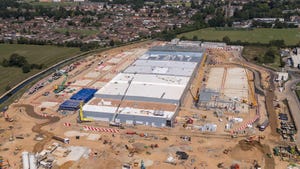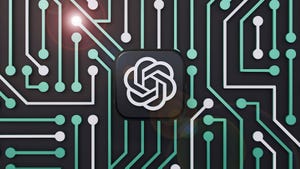
Insight and analysis on the data center space from industry thought leaders.
Data Center Efficiencies – A Look at The End-User
Efficiencies built around the end-user computing experience can actually help create a more robust data center environment. This is where technologies around user virtualization can really help. The idea here is to abstract the user from the hardware layer, writes Bill Kleyman of MTM Technologies.
November 19, 2012
Bill Kleyman is a virtualization and cloud solutions architect at MTM Technologies where he works extensively with data center, cloud, networking, and storage design projects. You can find him on LinkedIn.

Bill-Kleyman-tn
Bill KleymanMTM Technologies
Today’s data center environment is designed and built around efficiencies. These infrastructures have advanced cooling mechanisms, high-density server technologies, and try to use space as optimally as possible. IT administrators are continuously tasked with furthering these efficiencies and making their environment even more robust. There are lots of ways to enhance the data center. Monitoring tools, virtualization technologies and rack configurations can all help to make the environment better. However, there is an often overlooked element that can take an infrastructure even further.
The Connection Between Data Center and End-User
When designing efficiency solutions for a data center – why not look at the end-user? Efficiencies built around the end-user computing experience can actually help create a more robust data center environment. This is where technologies around user virtualization can really help. The idea here is to abstract the user from the hardware layer. This allows the end-user to carry their settings, changes and application profiles with them regardless of their devices, hardware platform or even operating system.
From the end-user’s perspective, they now have their settings with them at all times, on any device and on almost any platform. However, how does user virtualization create data center and IT administrative efficiencies?
BYOD and IT consumerization. A good BYOD (Bring Your Own Device) initiative can actually help reduce the amount of resources required within the data center and the IT environment. Fewer management points, less physical end-points to oversee, and a simplified computing process all make "IT consumerization" something to consider. With user virtualization, the end-user is able to carry their settings from one device to another seamlessly – this can be between an iPad and a PC, for example. Settings carry over with the user as they migrate from personal device to personal device. From an IT perspective, they only need to manage the client being deployed to that end-point and nothing more. All of this translates to fewer moving parts within the IT environment.
Data center server reduction. With user virtualization come some data center efficiency considerations. With BYOD, we’re reducing the amount of end-points which have to be managed. Much of the BYOD initiative relies on application and sometimes desktop delivery. Since most servers serving BYOD are VMs, there is a direct reduction in physical servers having to be provisioned at the data center level. More efficient, high-density computing can help reduce stand-alone rack servers and create a more efficient environment.
Ease of management. From an IT management perspective, user virtualization can help alleviate numerous headaches. User profile bloating, corruption and personalization abnormalities become a thing of the past. At the data center level, IT management level, administrators are able to manage fewer end-points and fewer thick computing devices. The result is a client-only management platform where users are able to use their own computing platform while still accessing centralized data. With user virtualization, and other virtualization technologies, managers are able to centralize and effectively replicate their data. This delivers the ability to easily migrate user settings and profiles from one system to another without much downtime.
Cloud outsourcing. With user virtualization, the ability to move to a cloud platform becomes much easier. User settings can be centralized and controlled at either the local data center level – or within a cloud environment. Instead of having to migrate scripts, various servers and profile settings, administrators are able to control the user from one management console. This means that the user management functionality can be outsourced to the cloud. Offloading certain user, application and workload functions into the cloud will result in a reduction in complexity at the local data center. This means a reduction in the hardware platform and fewer software management tools.
In creating a more powerful end-user computing experience, administrators are able to do more with less. By isolating the user layer, efficiencies can be built around the hardware and software layer. Virtualization technologies were created to enhance hardware efficiencies and this directly translates to the data center environment. As mentioned earlier, by controlling the user element administrators can reduce the number of servers, manage their environments more easily and implement user-focused computing initiatives faster. Many times, technologies outside of the immediate data center world can have big impacts on the data center environment itself.
By creating a more robust end-user experience in deploying user virtualization, data center administrators can find themselves working with a new layer of environment efficiencies.
Industry Perspectives is a content channel at Data Center Knowledge highlighting thought leadership in the data center arena. See our guidelines and submission process for information on participating. View previously published Industry Perspectives in our Knowledge Library.
About the Author
You May Also Like




.jpg?width=300&auto=webp&quality=80&disable=upscale)




